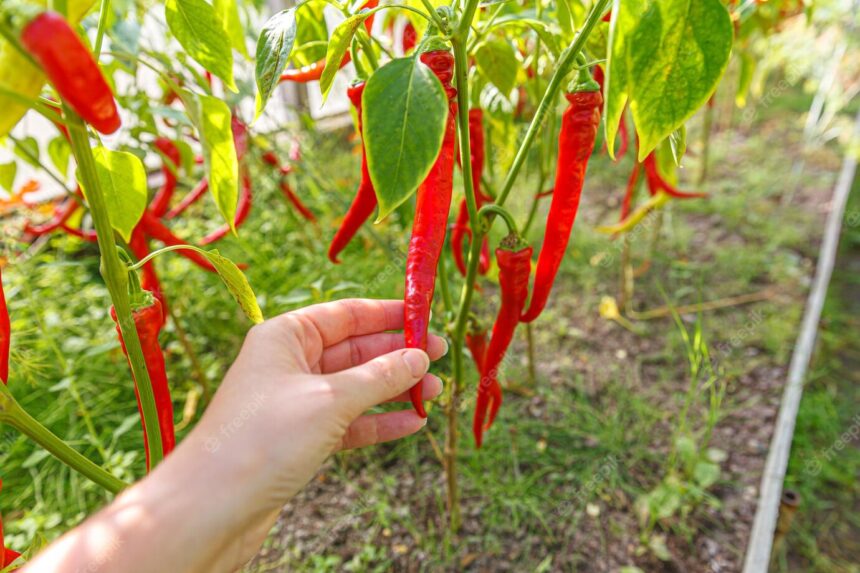When growing chili peppers in South Africa, there are several infections and diseases that you should watch out for to ensure the health and productivity of your plants. Here are a few common ones:
- Bacterial Spot (Xanthomonas campestris pv. vesicatoria):
This is a bacterial disease that causes small, dark lesions on the leaves, stems, and fruits of chili plants. It can lead to defoliation and fruit rot. To prevent bacterial spot, avoid overhead watering, provide adequate spacing between plants for good airflow, and use disease-resistant varieties if available. - Phytophthora Blight (Phytophthora capsici):
Phytophthora blight is a fungal disease that affects the roots, stems, and fruits of chili plants. It causes wilting, dark lesions, and rotting of the plant tissue. To manage this disease, ensure good drainage in the growing area, avoid overwatering, and practice crop rotation. - Verticillium Wilt (Verticillium dahliae):
Verticillium wilt is a fungal disease that affects the vascular system of chili plants, causing wilting, yellowing, and stunting. The leaves may also develop brown streaks. This disease is challenging to manage once established, so prevention is key. Use disease-free seedlings, practice crop rotation, and avoid planting chili peppers in soil where susceptible plants have grown in the past. - Root-knot Nematodes (Meloidogyne spp.):
Nematodes are microscopic worms that can cause significant damage to chili pepper roots, leading to stunted growth, wilting, and poor fruit production. To control nematodes, practice crop rotation, select nematode-resistant varieties, and maintain good soil health by adding organic matter. - Chili Thrips (Scirtothrips dorsalis):
These tiny insects feed on chili plant leaves and fruits, causing silvering, distortion, and scarring. They can also transmit viruses. To manage chili thrips, monitor your plants regularly, remove heavily infested leaves, and consider using insecticidal soaps or oils if the infestation is severe. - Tomato Spotted Wilt Virus (TSWV):
This viral disease can affect chili peppers, causing wilting, yellowing, necrosis, and ringspots on leaves and fruits. It is transmitted by thrips. To reduce the risk of TSWV, manage thrips populations as mentioned earlier and remove and destroy infected plants promptly.
It’s important to regularly inspect your chili plants for any signs of diseases or infections. Prompt identification and appropriate management strategies, including cultural practices and, in some cases, the use of fungicides or insecticides, can help prevent and control these issues. Additionally, selecting disease-resistant varieties when available can greatly reduce the risk of infections and diseases.







